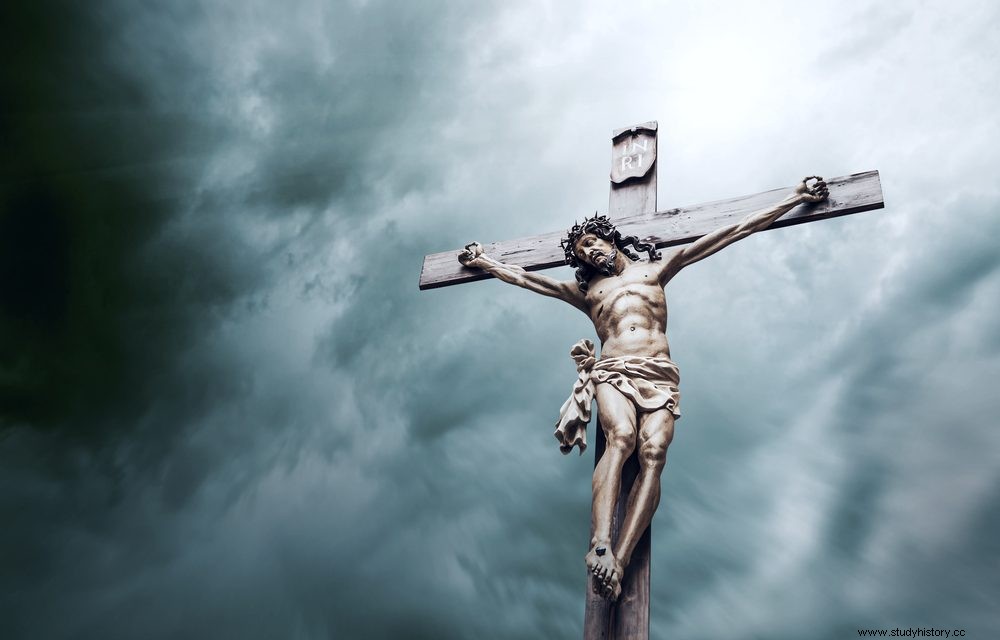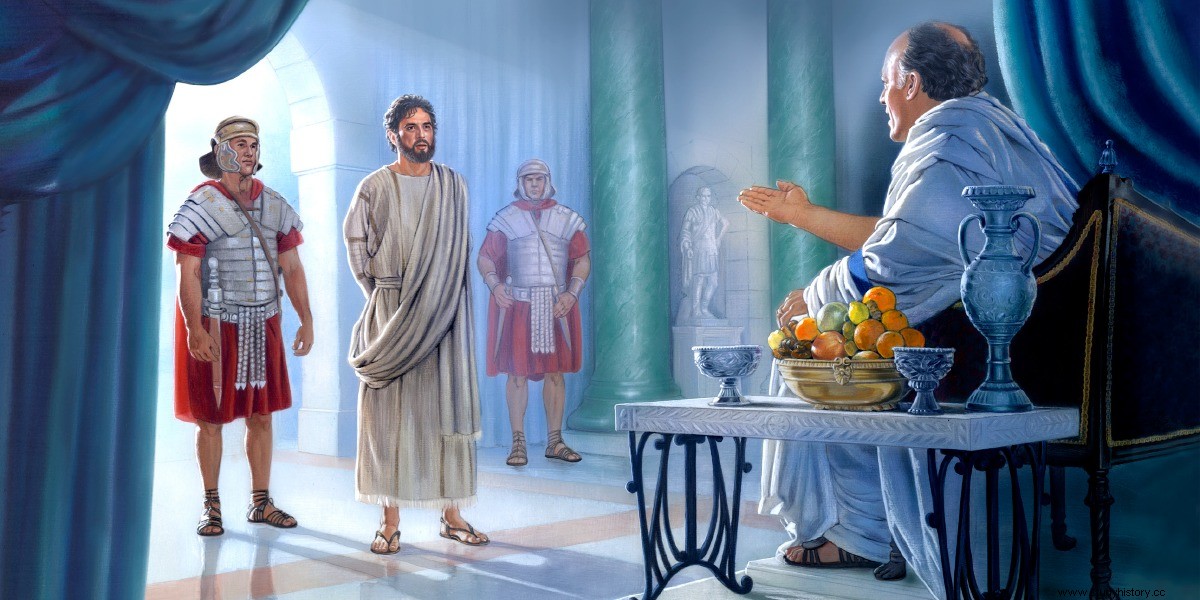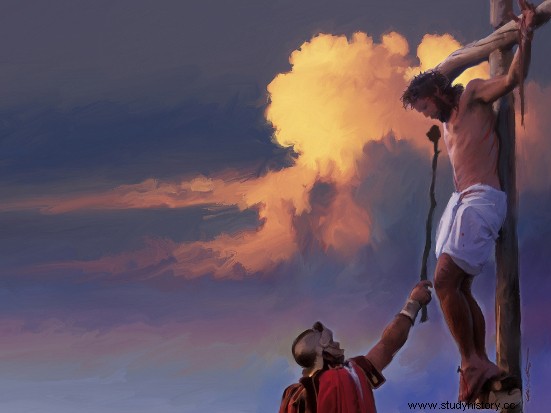Had he not been crucified, today the symbol of Christianity, instead of a cross, could be, for example, a noose with a hangman's knot or a torn tunic. And why was he crucified? Well, because the Romans were very square and had everything perfectly regulated. Depending on the crime and your condition, one punishment or another was applied to you, and that is why the historical Jesus Christ was crucified.
Rome, despite imperial expansionism and the multiple campaigns of domination and conquest undertaken by her armies, was characterized by religious tolerance. In fact, religious tolerance is more significant in polytheistic systems, willing to admit diversity, than in monotheism, which admits no foreign presence. In Rome, as long as order and peace were respected, the corresponding taxes were paid and the political supremacy of the emperor was accepted, you could venerate or worship the Flying Spaghetti Monster (Pastafarianism), Maradona (Madariona Church), the Star Wars saga (Jediism) or UFOs (Raelian Movement). So why were there persecutions against Christians? At first, the Romans did not pay much attention to the Christians, because they saw it as a sect within Judaism. However, with the passage of time, Christianity became stronger and the attitude of the Romans towards them changed, to the point of persecuting them (on time). And they did it because they broke the established rules:they did not accept the rest of the gods, only their own; they did not recognize the imperial authority and their fanaticism turned them into a problem of public order, beginning to be perceived as a threat to the unity of the Empire. So, it can be concluded that more than a religious issue, it was a political issue. In fact, and returning to the subject of the article, Jesus Christ was accused of the crime of secession.

Initially, Jesus the Nazarene was tried by the Sanhedrin for a religious offense (blasphemy), which carried death by stoning under Hebrew law. Let us remember that we are in the province of Judea subject to the Roman Empire, which implies that the competent authority to pass a death sentence corresponds to the Roman governor, in this case Pontius Pilate. So, faced with the impossibility of executing death sentences, the Jewish leaders brought him before Pontius Pilate. Knowing that the Roman equivalent of 10 Our Fathers and 3 Hail Marys would have fallen for the religious crime, they changed the crime to sedition (they accused him of inciting the people and pretending to usurp political power by calling himself king). As the governor knew that everything was a plan orchestrated by the Sanhedrin to eliminate him for "the good of the community" -the words of the high priest Caiaphas are revealing:it is convenient that one die for the people and not that the entire nation perish - , he tried to free it, but there was no way. So, he convicted him of the crime of sedition punishable by death according to the Lex Julia lesae maiestatis (treason, sedition, promoting rebellions, assassination of magistrates...).

Roman law contemplated several forms of execution, depending on the crime and the condition of the criminal. So, given the seriousness of the crime and the condition of the Nazarene as a foreigner, the execution was reduced to the category of summa supplicia :the crucifixion, the stake (crematio or annoying robe) or exposure to wild beasts in the circus (damnatio ad bestias) . And why was crucifixion chosen? Well, because it was the most unworthy, a form of publicity lesson against agitators and rebels against the Empire. As a class and hierarchical society, it was also taken into account at the time of executions, and crucifixion was a prohibited practice for Roman citizens sentenced to death, being reserved for slaves and foreigners. Another example is found in the most famous slave rebellion, when the 6,000 men Crassus captured, including Spartacus, were crucified on the Appian Way from Capua to Rome as a grim warning to any slave who thought he might again challenge the power of the slaves. Republic. With the crucifixion, in addition to the humiliation of being exposed to the elements and in public view, it was necessary to add that it was a slow and painful death, which could last for several days. The execution of the condemned to die on the cross was carried out outside the city in a place of public access. Normally, the vertical wood was already fixed in the place planned for the crucifixions, and the condemned person had to carry the cross wood on his shoulders.
And now, one last detail. In the Gospel according to Saint John, in its chapter 19 it says:
Later, knowing that everything was finished, and so that the Scripture would be fulfilled to the end, Jesus said:I am thirsty.
There was a container full of vinegar; they soaked a sponge in it, tied it to a sprig of hyssop, and held it to his mouth. After drinking the vinegar, Jesus said:«Everything has been fulfilled». And bowing his head, he gave up the spirit to him.
Without going into the intention of those who offered it or the meaning of Jesus' words beyond the literal, this story has to do with vinegar or, rather, with the supposed vinegar. What was a “container full of vinegar” doing there? The answer to this question is much simpler if we think that it was not vinegar, but posca .

The posca It was a drink that was made by mixing water and chopped or vinegared wine. Normally, it was the wine consumed by citizens who could not afford a superior quality and, above all, by the legions of Rome in their many campaigns of conquest throughout the known world. And even though it had a very unpleasant taste, it had several advantages over wine:it was very cheap, there was no risk of spoilage - it was already ground - and it was the safest way to drink water (the Egyptians used wine as an antiseptic and the Persians as a germicide). So, since Jesus Christ was guarded on the cross by Roman soldiers, it is easier to place a “container full of posca” than a “container full of vinegar” in this scene.
